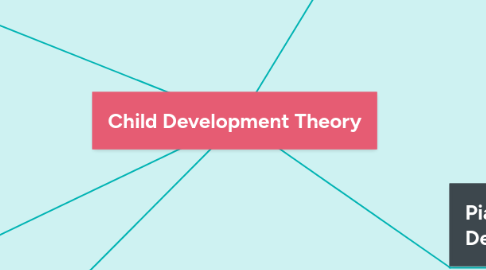
1. Development from One Stage to Another
1.1. Children develop as they confront new and unfamiliar features of their environment that do not fit with their current views of the world
1.2. Disequilibrium occurs - child seeks to resolve through one of two processes of adaptations
1.2.1. Assimilation - the child fits the new experiences into his or her existing view fo the world
1.2.2. Accommodation - change the schema/view of the world to incorporate the new expereinces
2. Implications of Child Development Theory for Education
2.1. the need for concrete examples + expereinces when teaching abstract cnocepts to young children who may not yet have reached a formal operations stage
2.2. Piaget pointed out that much learning occurs without formal instruction as a result of the child's interactions with the environment
3. Implications of Child Development Theory for Technology Integration
3.1. Seymour Papert worked with Piaget and used his theories as the basis of his work with Logo
3.2. Papert challenged the past instructional goals + methods for math; became the first constructivist statement of educational practice w/ technology
4. Jean Piaget
4.1. Believed that all children go through FOUR stages of cognitive development
4.2. Believed that the age at which children experience these stages vary somewhat; age does not determine development alone
5. Piaget's Stages of Cognitive Development
5.1. Sensorimotor Stage
5.1.1. Birth to about 2 years
5.1.2. Children explore the world around them through their senses + through motor activity
5.1.3. Children cannot differentiations between themselves + their environments; if they can't see it, it isn't there
5.1.4. Children begin to have some understanding of cause + affect (if I slam my cup it makes a loud noise)
5.1.5. Ability to follow things with their eyes
5.2. Preoperational Stage
5.2.1. Age 2 to about age 7
5.2.2. Speech has developed and children begin to engage in symbolic activities such as drawing pictures or pretending/imagining
5.2.3. Develop numerical abilities
5.2.4. Level of self-control are able to delay gratification but children are still fairly egocentric
5.2.5. Unable to do conservation tasks
5.3. Concrete Operational Stage
5.3.1. Age 7 to about age 11
5.3.2. Children increase in abstract reasoning ability
5.3.3. Ability to generalize from concrete experiences and can do conservation tasks
5.4. Formal Operations Stage
5.4.1. Age 12 tabour age 15
5.4.2. Children can form and test hypotheses, organize information, and reason scientifically
5.4.3. Show results of abstract thinking in the form of symbolic materials
